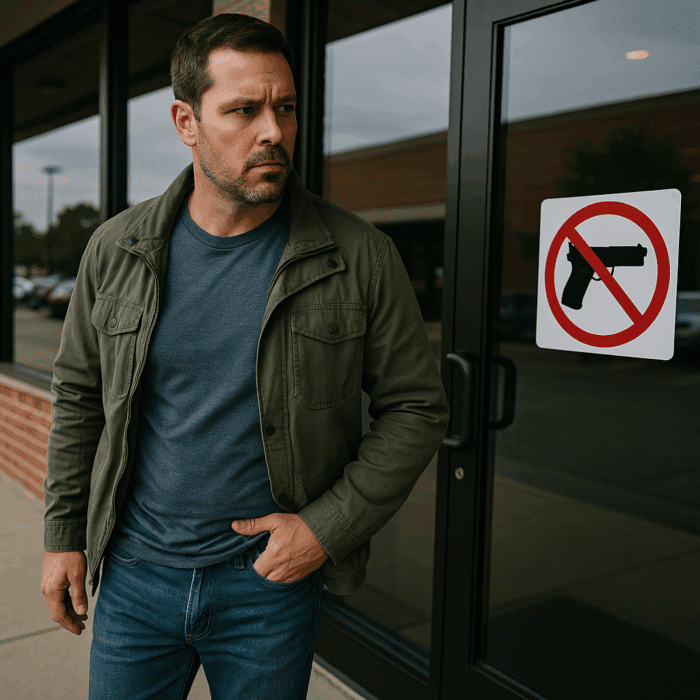Non-Permissive Environments: A Firearms Instructor’s Perspective
People often ask me, “How do I handle carrying my firearm into a place where it’s not allowed?” After decades in law enforcement, instruction, and the courtroom, my answer usually surprises them.
Before anything else, ask yourself: Why do you want to?
A non-permissive environment (NPE) is a place where firearms are not welcome—either by law or private policy. These include spots with “Gun-Free Zone” signs, company rules in the employee handbook, or properties where carrying could get you arrested.
Here’s something my mother used to say: “Don’t go where you’re not wanted.” That advice still makes sense. If a business posts signs saying people like us—those who carry to protect ourselves and our families—aren’t welcome, why give them our money? Why reward them with your business? You wouldn’t tip a waiter who insults you as you walk in the door.
Let your wallet speak louder than your holster.
Don’t argue with managers or make a scene that plays into negative stereotypes about gun owners. Instead, stay professional. Write a calm, respectful letter explaining your views. Leave a thoughtful review:
“It’s disappointing to see a business that doesn’t support a citizen’s right to self-protection.”
Or better yet—say nothing and quietly take your money elsewhere.
Two Types of Non-Permissive Environments
Hard NPEs are places where carrying a firearm is illegal—schools, courthouses, federal buildings, etc. Getting caught can mean arrest, criminal charges, and a permanent record. No errand is worth becoming a felon.
Soft NPEs are privately owned places like coffee shops or stores that ban firearms by policy, not law. You may still carry legally, but if someone spots your gun and asks you to leave—you must leave.
And leave politely. Don’t argue. Don’t sigh. Don’t act annoyed. Cameras are everywhere, and someone could twist your actions into claims of being hostile or threatening.
How to Carry Smart in a Non-Permissive Environment
If you choose to carry in an NPE, you must conceal properly. That means no printing, no bulky gun under a tight t-shirt, and no behavior that draws attention.
For those whose job bans firearms but state law doesn’t, proceed carefully. If your employer discovers you carry and fires you, your next job hunt could suffer. A reference might say, “He only followed the rules he liked.”
Smaller guns make concealment easier. Appendix carry under a closed shirt works well. Years ago, I used a belly band to carry a small .38 with a tucked-in shirt and loosened tie. It blended in, and I could still draw quickly with practice.
Other deep concealment options include:
Ankle holsters (watch out when sitting or crossing your legs),
Off-body carry (briefcases or purses in office settings),
Fanny packs (yes, they’re back in style and go unnoticed in public).
If you want the best in deep concealment, check out the Phlster Enigma—a modern holster system that allows you to carry a larger firearm securely and invisibly.
For a deeper dive into off-body carry, look into the work of Vicki Farnam—her research is unmatched.
The Bottom Line
Gun-free zones don’t make people safer. Mass killers often target these areas because they expect no resistance. Many have said so themselves.
When I see a “No Guns” sign, I don’t see protection—I see a sign that marks unarmed victims.
Avoid those places when you can. But if you must go:
Conceal well
Act respectfully
Know the legal risks
Carrying a firearm is your right—but it also comes with responsibility. It’s not just about the hardware on your belt. It’s about exercising good judgment every step of the way.

